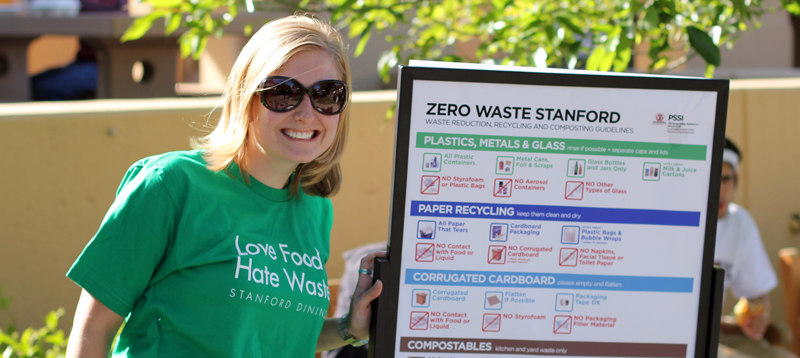Mindful of the continued growth necessary to support and advance its academic mission and enroll more students, while also striving to incorporate sustainability as a core value of the university, Stanford maintains an unrelenting commitment to reducing its impact on resources.
Campus Action
If we are to leave our children a better world, we must take steps now to create a sustainable environment. So it is critical that we model sustainable citizenship on our own campus.
—John Etchemendy
Provost, Stanford University
Reducing energy use is central to creating a sustainable campus. It’s also a formidable task, given the growing energy needs of research universities. Stanford has a strong foundation for success, however, as we’re building on a decades-long commitment to energy conservation and efficiency, as well as the advantages of a temperate climate and strong state energy codes.
On January 17, 2014, Governor Brown issued a Declaration of Emergency for the State of California due to drought and severe water shortage conditions. Since the announcement, Stanford has completed a detailed analysis of its water consumption to develop a set of measures to voluntarily further reduce water use.
Buildings represent one of our greatest sustainability opportunities and challenges. To evolve as a center of learning, pursue world-changing research and respond to pressing environmental concerns, Stanford designs and creates buildings that use resources wisely and provide healthy, productive environments.
Stanford runs one of the most comprehensive programs in the country to reduce university-related traffic impacts – it’s an essential part of our drive for sustainability.
Minimizing waste contributes to a more sustainable Stanford in many ways. By using less, reusing more, recycling and composting, Stanford can preserve land, save energy, conserve water, reduce greenhouse gas emissions and preserve natural resources.
![]()
Stanford Dining is committed to providing sustainable, locally-produced foods whenever possible, and reducing food waste through composting and recycling. These efforts help decrease pollution from pesticides and chemicals, reduce energy use, support local small businesses, and provide fresh and delicious meals.






